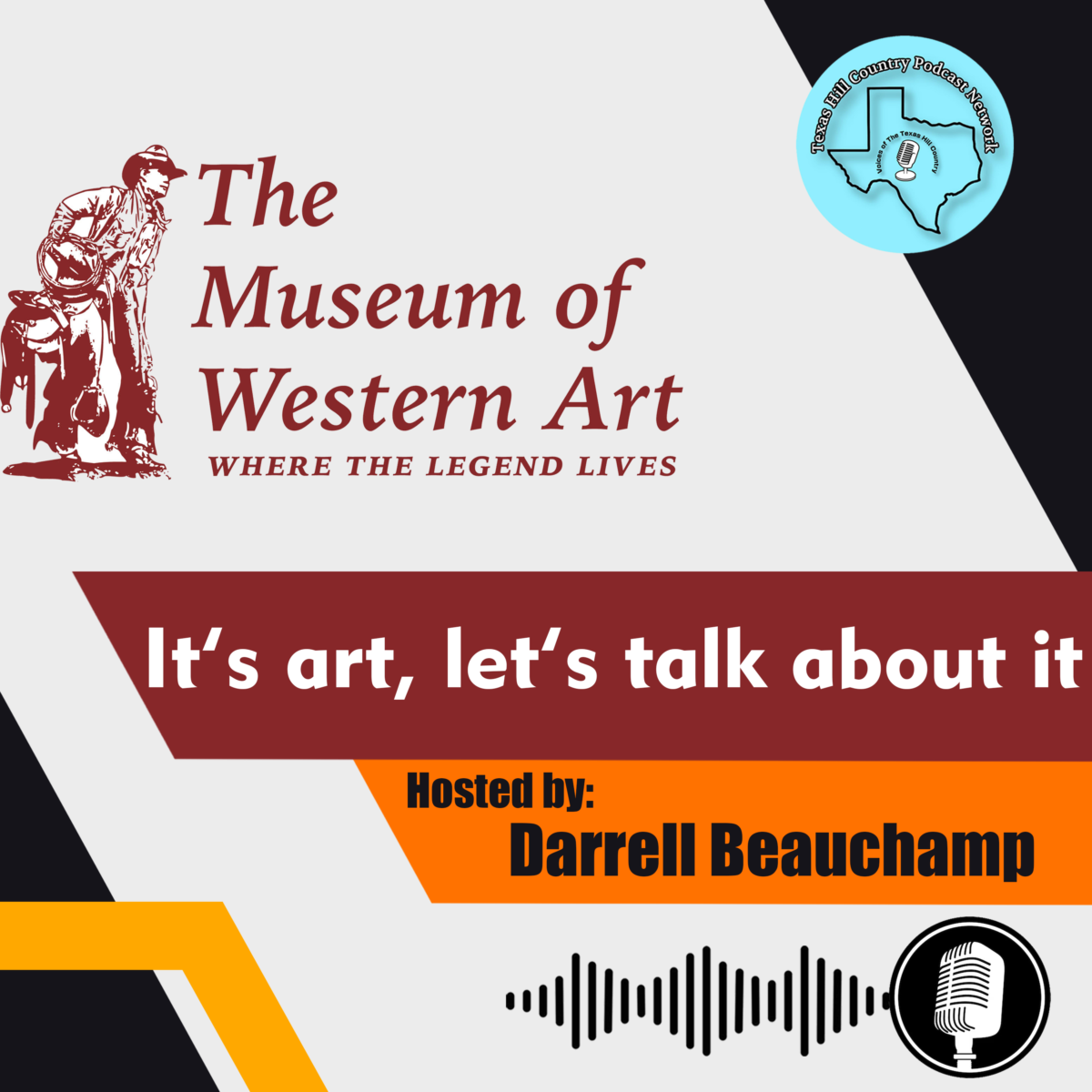The Museum of Western Art is dedicated to excellence in collecting, preserving, and promoting Western Heritage and our diverse audiences’ education and cultural enrichment. The Museum serves as a bridge between the past and the present, ensuring that the legacy of the American West will be preserved for the future. Western Art is as engaging and important as ever. In this podcast series, Museum Executive Director Darrell Beauchamp visits with the artists who work in this Western heritage to talk about their work, the legacy of Western Art, and why talking about it is so important today. In this episode, Darrell visits with Herman Walker.
A well-known painter and sculptor, Herman Walker has had a fascinating artistic journey filled with experimentation, mentorship, and a switch between various media. Walker provided insights into his creative process and the factors that have shaped his career in a recent episode of the podcast “It’s Art, Let’s Talk About It,” which Darrell Beauchamp hosts.
Walker’s artistic journey began in college when he discovered his passion for sculpture. In 1972 and 1973, he successfully cast his first bronze sculptures, setting the stage for his future artistic endeavors. However, Walker’s artistic exploration continued beyond sculpture. He also delved into other mediums, such as sketching, painting, and watercolor.
One of the key factors that shaped Walker’s artistic journey was his early influences and mentors. Tom Ryan, in particular, played a significant role in guiding Walker and offering valuable advice. Walker emphasized the importance of learning through experience, stating, “So many of us, as we go through life, find that the best experience is just by doing it and doing lots and lots of it.” Walker relied on experimentation and learning from other artists who needed formal training to improve his craft.
Walker’s desire for greater control and detail, particularly when portraying the cowboy way of life, motivated his switch from watercolor to oil painting. He found that oils were more conducive to achieving the desired level of detail. While watercolors allowed for a looser style, oils provided the opportunity to capture the intricacies of the gear, tack, and cowboys. Walker’s dedication to accuracy and admiration for artists who work in a tighter style influenced his artistic choices.
Throughout his career, Walker actively participated in numerous Western art shows in the 70s and 80s, expanding his audience and gaining recognition. This period was an exciting time for the Western art field, with a vibrant market and ample opportunities for artists. Walker had the privilege of showing his work alongside some of the best artists in the industry, thanks to invitations to prestigious shows.
However, the late 80s brought a downturn in the art market, leading Walker to explore other careers. Despite this setback, his passion for art never waned. In 2008, he returned to the art world, utilizing online marketing to reach a wider audience. Walker emphasized the importance of personal engagement in online marketing and encouraged young artists to understand the challenges they may face.
Walker’s dedication to his craft is evident in his work ethic. He acknowledged that putting in long hours and extra effort is necessary when he is truly excited about a project. This commitment to capturing the essence of the cowboy lifestyle and telling a story through his art sets Walker apart.
In conclusion, various factors—including early influences, mentorship, experimentation, and market trends—have shaped Herman Walker’s artistic journey and transition across mediums. His dedication to capturing the essence of the cowboy lifestyle and meticulous attention to detail have made him a respected Western artist. Walker’s story inspires aspiring artists, highlighting the importance of perseverance, continuous learning, and adapting to changing circumstances in the art world.
To explore Herman Walker’s artwork, visit his website at hermanwalker.com or search for “Herman Walker artist” online.
Resources:
Darrell Beauchamp on LinkedIn



